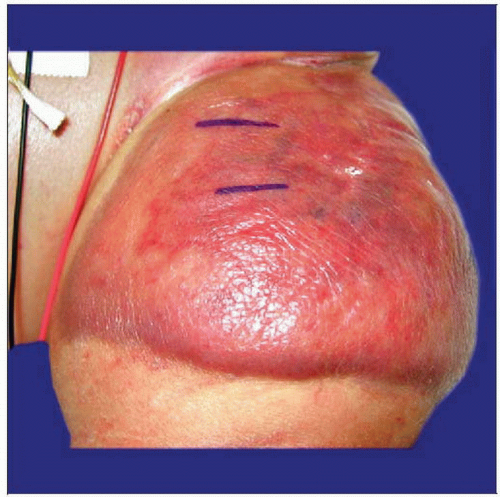Kaposiform Hemangioendothelioma
Steven D. Billings, MD
Key Facts
Clinical Issues
Presents in infants and young children
Associated with Kasabach-Merritt syndrome (especially retroperitoneal tumors)
Consumptive coagulopathy
Thrombocytopenia
Rare regional lymph node metastasis
No distant metastasis
Mortality approximately 10%, related to local effects of tumor or Kasabach-Merritt syndrome
Microscopic Pathology
Spindled areas resembling Kaposi sarcoma
Areas resembling capillary hemangiomas
Minimal atypia
Positive for CD31, CD34, FLI-1, and podoplanin
Negative for HHV8
 Clinical photograph shows a large inguinal tumor in an infant. More superficial tumors typically present as an erythematous or violaceous mass. |
CLINICAL ISSUES
Epidemiology
Age
Majority present in childhood to teen years
Approximately 1/2 of kaposiform hemangioendothelioma cases present in 1st year of life
Presentation
Painful or painless mass
Presents as superficial or deep mass
Cutaneous lesions present as violaceous plaques
Deep tumors often multiple nodules
Associated with Kasabach-Merritt syndrome (especially retroperitoneal tumors)
Consumptive coagulopathy
Thrombocytopenia
Majority of all cases of Kasabach-Merritt syndrome associated with kaposiform hemangioendothelioma
Treatment
Surgical approaches
Wide excision
Drugs
Vincristine
Cyclophosphamide
Methotrexate
Stay updated, free articles. Join our Telegram channel

Full access? Get Clinical Tree



